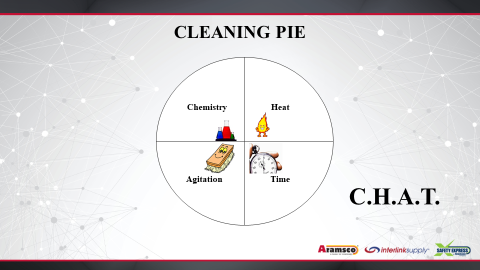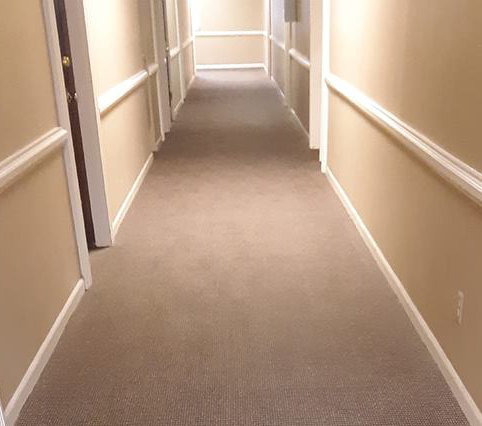We recently flew to Ohio to help a relative move into an assisted living facility and stayed in a nearby townhouse. During the move, an interesting situation involving a dirty carpet arose, and that’s why I’m writing this post.
The Dilemma
The townhouse had a nice nylon carpet that was 17 years old and it was clear that it needed to be cleaned.
The constraints of the situation meant that I would need to clean it myself without my favorite cleaning solutions. There were several unidentifiable soiled spots and a definite traffic lane that ran from the kitchen through the living room and into the bedroom.
Spot Removal
First, I needed to see if the spots could be removed with the cleaning solutions that I had on hand.
I had one consumer spot remover, which is effective at cleaning, but prone to severe re-soiling if not rinsed away. I did a small test for each affected spot and had a favorable result. I was probably removing soil that had attached itself to the spotter residue.
This led me to my next step which involved renting a nationally known consumer extractor. I selected one of their hydrogen peroxide-based rinse agents.
I treated the spots with the consumer spotter and ran the consumer extractor back and forth several times with the peroxide-based rinse agent.
I then applied several towels over these spots to absorb any wicking overnight.
Dry Soil Removal
The next morning I removed the towels and there was a limited amount of wicking.
I immediately laundered the towels so that I could use them again. Before extraction, I spent an hour vacuuming the 350 sq. ft. living room.
I spent most of the time cleaning the traffic lanes (if I remember correctly, almost 80% of the soil in the carpet can be removed with thorough vacuuming).
Vacuum Extraction
The consumer extractor I used is known for getting the carpet too wet. I needed to adjust for this weakness. The area outside the traffic lanes only needed a maintenance cleaning. I used half of the recommended dilution of the rinse agent, and although the directions called for two wet passes for every dry pass, I ran one dry pass for every wet pass of the extractor.
The results were good.
Traffic Lane Extraction
I pre-treated the visible traffic lanes heavily with the consumer spotter.
After about 15 minutes of dwell time, I extracted the areas with multiple wet and dry passes. Once again, I placed towels over large areas and stepped on them to aid in drying and provide a destination place for wicking soils.
After a few hours of cleaning, I needed to take a good nap.
The Aftermath
The next day a few visitors came to see our relative. One of them had told our relative to get the carpets cleaned.
I removed the towels the next day and was shocked at how well the carpet looked.
They were surprised that we used the consumer extractor and got such good results. She asked me in detail how I was able to get these results so that she could get her husband to clean her carpet in the same complex. I gained a new friend and probably lost any chance of a friendship with her husband.
Conclusion—Lessons Learned
I used an average vacuum and would have gotten even more soil out with a professional vacuum.
I used average chemistry at best, lukewarm tap water, limited agitation, and a lot of time, but still ended up with a good result. If I had used professional chemistry, a hot truckmount, and good brush agitation I would have had better results in about one-third of the amount of time.
In short, when you lack one part of cleaning you can make up for it with other principles of cleaning (see cleaning pie above). However, cleaning efficiently makes you more money for your time.
No cleaner could stay in business if they had to clean the way I had cleaned unless it was a hobby or act of service.


